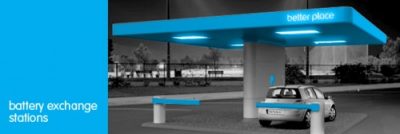Iran Khodro, a Peugeot partner for producing its line of 405 and 206D sedans, announced the production of what it claims is the world’s most powerful natural gas engine at 150 hp. The engine runs on compressed natural gas (CNG), and is supposed to comply with the EURO 4 emission standards. It will first be installed in the Samand Soren ELX, a 1700cc turbocharged gasoline bi-fuel four-door sedan, shown above at an auto show under supervision of the Ayatollah (much less dramatic photo here).
But Khodro’s claims don’t quite measure up: their engine is more powerful than the 113 hp Honda Civic GX (favorably reviewed by About.com and Consumer Reports) or the 98 hp 2009 Volkswagen Golf GTI BiFuel, but not any more than the 150 hp Volkswagen Passat TSI EcoFuel Concept revealed last year , and far less than the 163 hp Mercedes-Benz E 200 NGT, which was launched back in 2005.
 Honda Civic GX and Mercedes-Benz E 200 NGT
Honda Civic GX and Mercedes-Benz E 200 NGT
According to autoevolution.com, Iranians have converted over a quarter million cars to run on Compressed Natural Gas until now. In Tehran, one of the most polluted cities in the world, all buses run on CNG, while almost all of the city’s taxi drivers have been forced into converting their cars. CNG vehicles are far less polluting than gasoline or diesel cars, because CNG is a much simpler fuel and gives higher energy output for the same carbon content.
Why fossil fuels are used for energy: The underlying reason behind the widespread use of fossil fuels as a source of energy is the tremendous amount of energy that is released when carbon-hydrogen (C-H) and carbon-carbon (C-C) molecular bonds are broken. Carbon atoms are often found in long chains or rings containing C and H atoms, collectively called hydrocarbons. All of the fossil fuels we know are hydrocarbons: coal; natural gas; petroleum and its products like gasoline, diesel, and kerosene (jet fuel).
When hydrocarbons are burned, the bonds break and the energy is released as heat. The hydrogen, carbon and sulfur composing the fuel combines with oxygen and nitrogen molecules from the air to form new compounds. Under ideal conditions the hydrocarbons are converted into carbon dioxide and water, with additional pollution in the form of nitrogen oxides and sulfur oxides, which later on convert into particles, acid rain, smog and other health hazards.
The simplest fuels burn more cleanly and give more energy, and are therefore considered better for the environment. All fossil fuels, however, will add new carbon dioxide to the atmosphere and will contribute to the rise of greenhouse gas concentrations. On the balance, CNG powered cars will pollute less and emit fewer greenhouse gases, but are not a sustainable long term solution. Fully sustainable transport is at least 10 years in the future, so it does make sense to switch over to technologies that are available today for widespread use.
Mass market adoption of CNG cars: The biggest drawback of the CNG cars is the fueling infrastructure, simply meaning the places where you can fuel or recharge your car. Safety considerations for compressed natural gas have been addressed elsewhere (e.g. by about.com), and it appears that CNG cars are at least as safe as their gasoline and diesel equivalents. The existing fueling infrastructure, also a problem for electric vehicles, limits the potential range of these cars and adds a burden of inconvenience if you have fewer places where you can fuel. In my neighborhood of South Jerusalem, there is only one CNG station that I know of, on HaMusachim St. in the Talpiot industrial area.
One solution is a CNG fueling appliance installed at your home currently available in parts of the US, similar to charging for plug-in electric vehicles. Another is to use CNG cars in a limited area only – not extremely practical for the primary family vehicle, but ideal for fleets of delivery or service vehicles that travel a limited area, such as postal service, deliveries (pizza or UPS/DHL), maintenance. And the most practical solution is the bi-fuel feature available for most natural gas cars, similar to hybrid electric vehicles. This allows filling up the car with both CNG and gasoline, providing the flexibility between the better performance of gasoline vs. the improved mileage and environmental impact of the CNG, and preventing the scenario of running out of gas where there are no CNG fueling stations.
But without a doubt, only a small development is needed to make CNG cars perfect for the next generation picnics and tailgating parties, complete with built in stainless steel gas grills. “Because Jumpin’ Jack Flash is a gas gas gas!”





masouds, you’re absolutely right. That’s the beauty of fuel – you add a small amount of energy (like a match or a spark) to break the first bonds. When those atoms reform into a lower energy state, the excess energy is released as heat and continues breaking other bonds. That’s why fires are self sustaining until the fuel (or the oxygen) runs out.
So overall you put in a small amount of energy to get things started and end up with a large amount of heat energy that you can use. In the sedans, it’s converted into mechanical energy (motion) and in an power turbine it’s converted into electrical energy.
Thank you for explaining how “combustion” and “high energy density” really work.
Just a technical correction; Breaking bonds between atoms *requires* energy. Forming new bonds between them releases energy. In the case of hydrocarbons, it just so happens that breaking C-C and C-H bonds, requires less energy than the energy released through formation of C-O and H-O, therefore the whole reaction (also known as burning) releases energy.
One other note: The simpler fuel has more C-H bonds than C-C; C-H bonds require less energy per mole to break than C-C, and thus generates more energy if they are burned completely.